Charles E W Bean, Diaries, AWM38 3DRL 606/270 PART 2/1 - 1918 - 1939 - Part 5
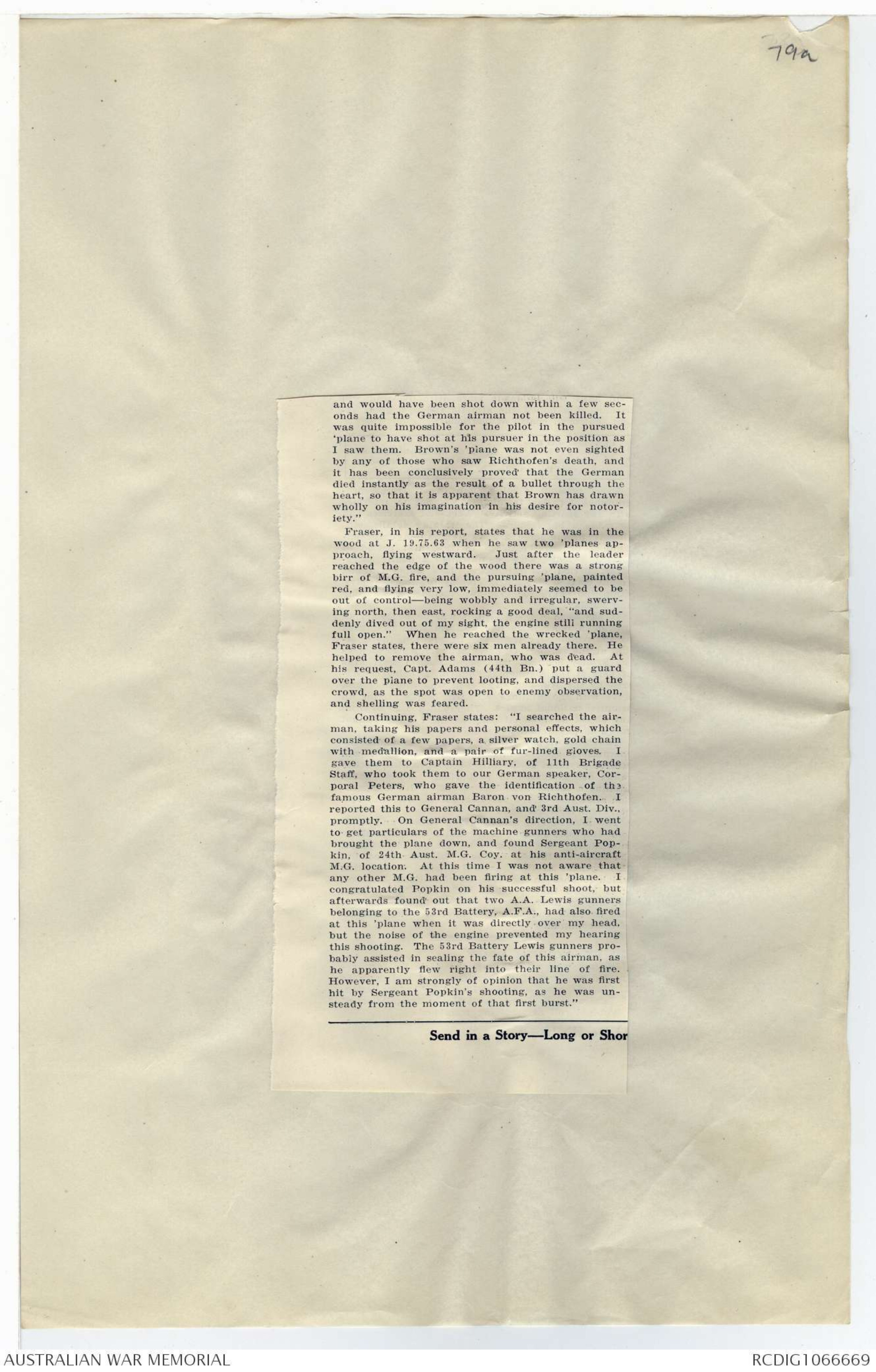
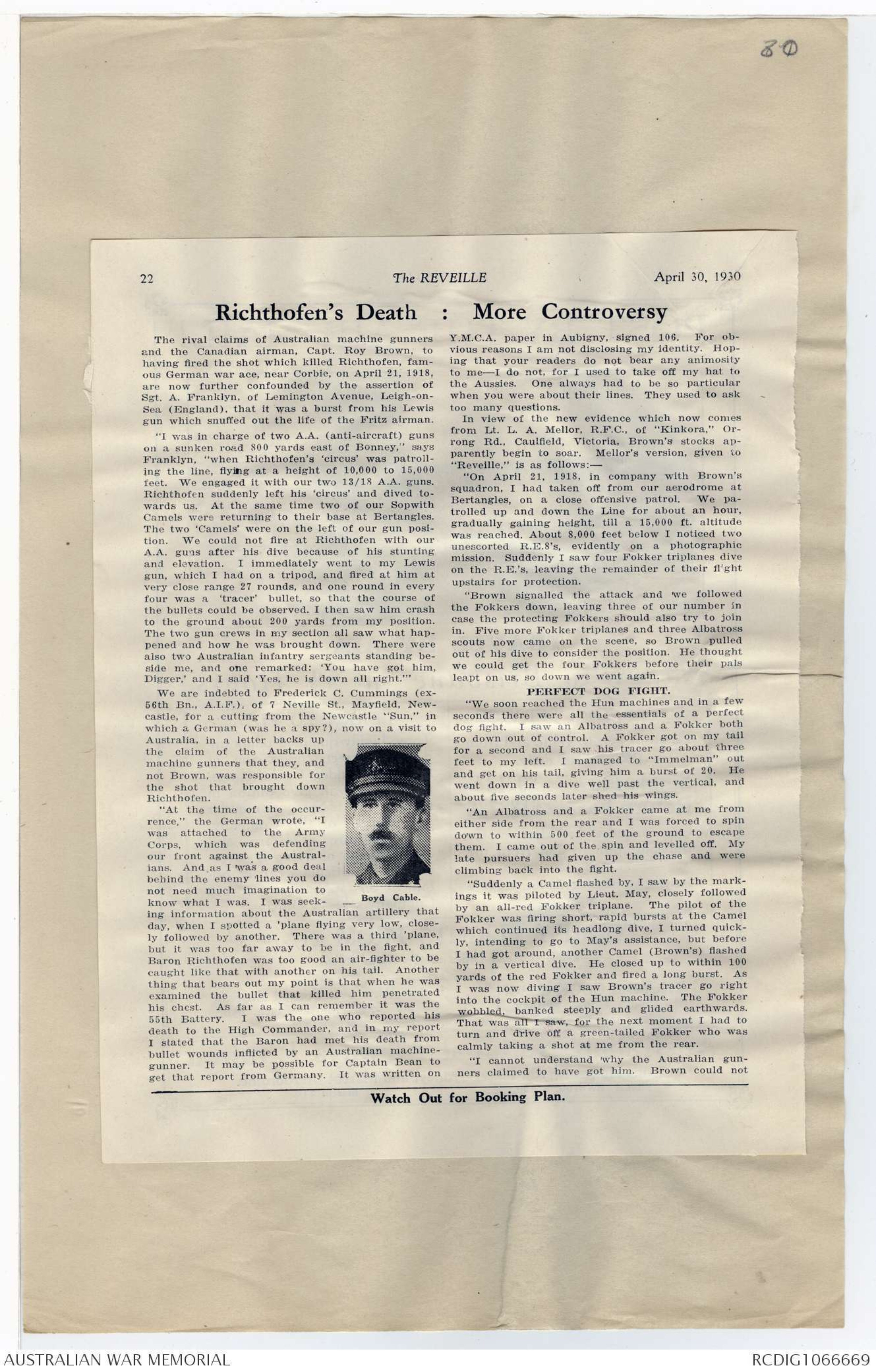
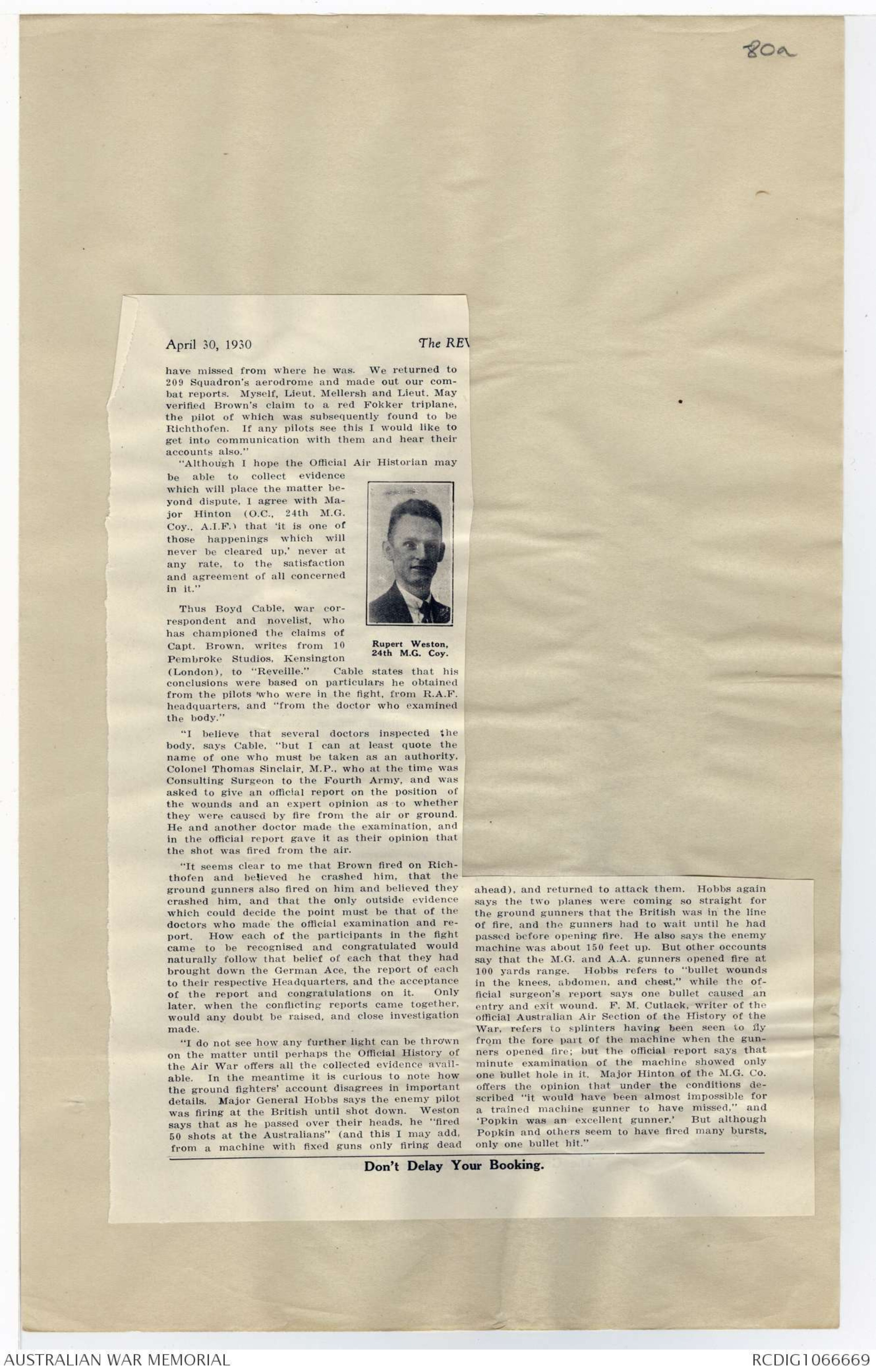
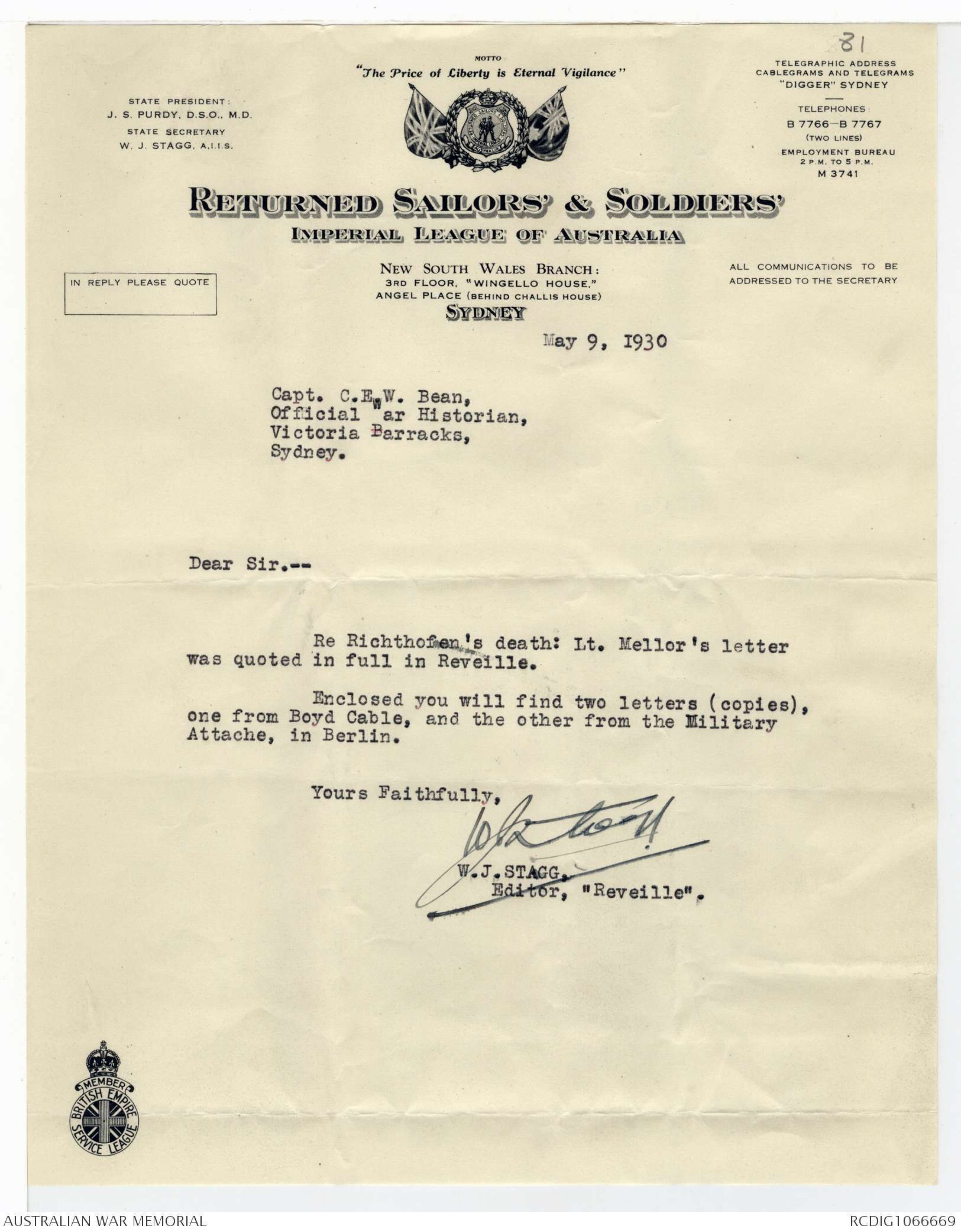
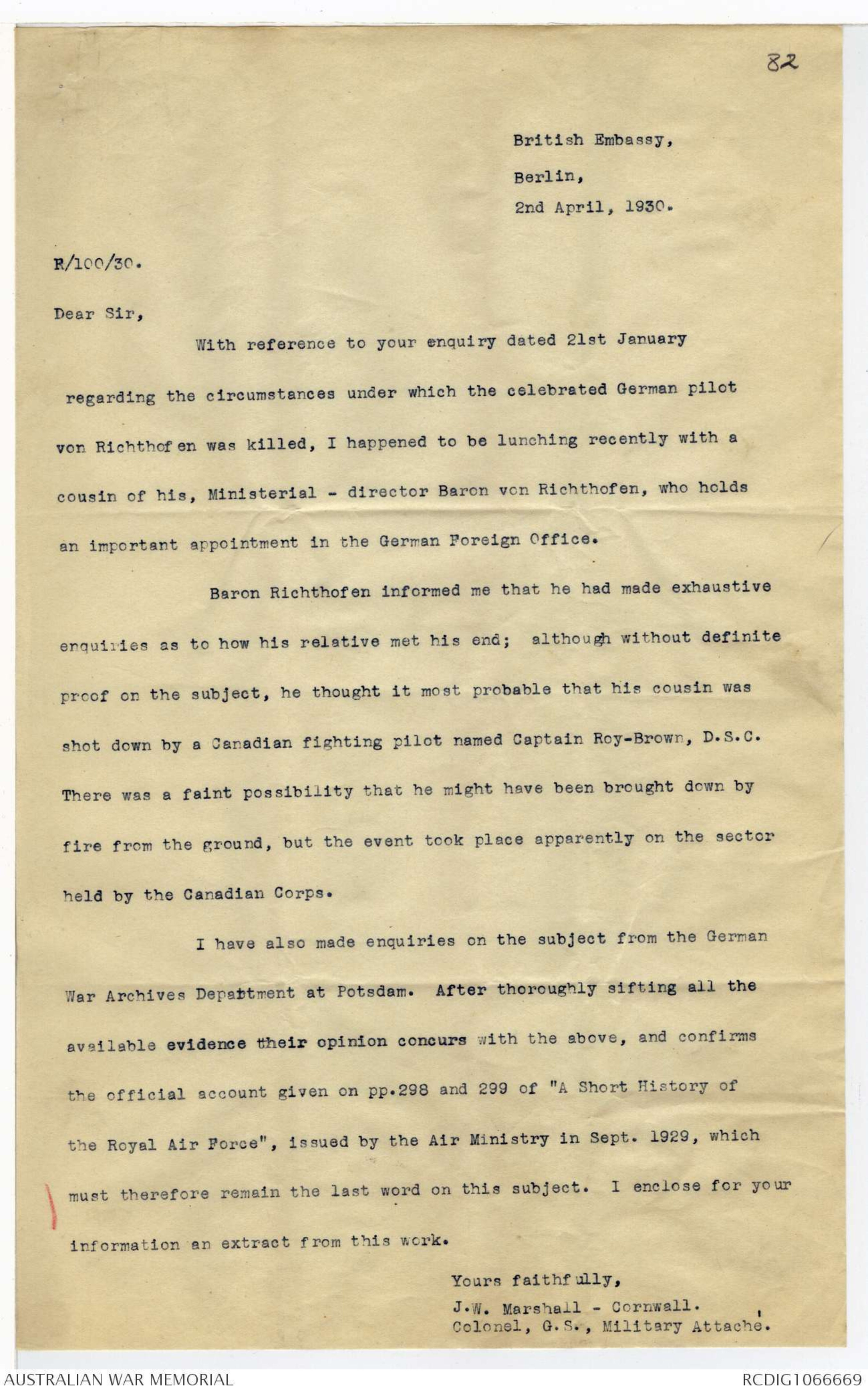
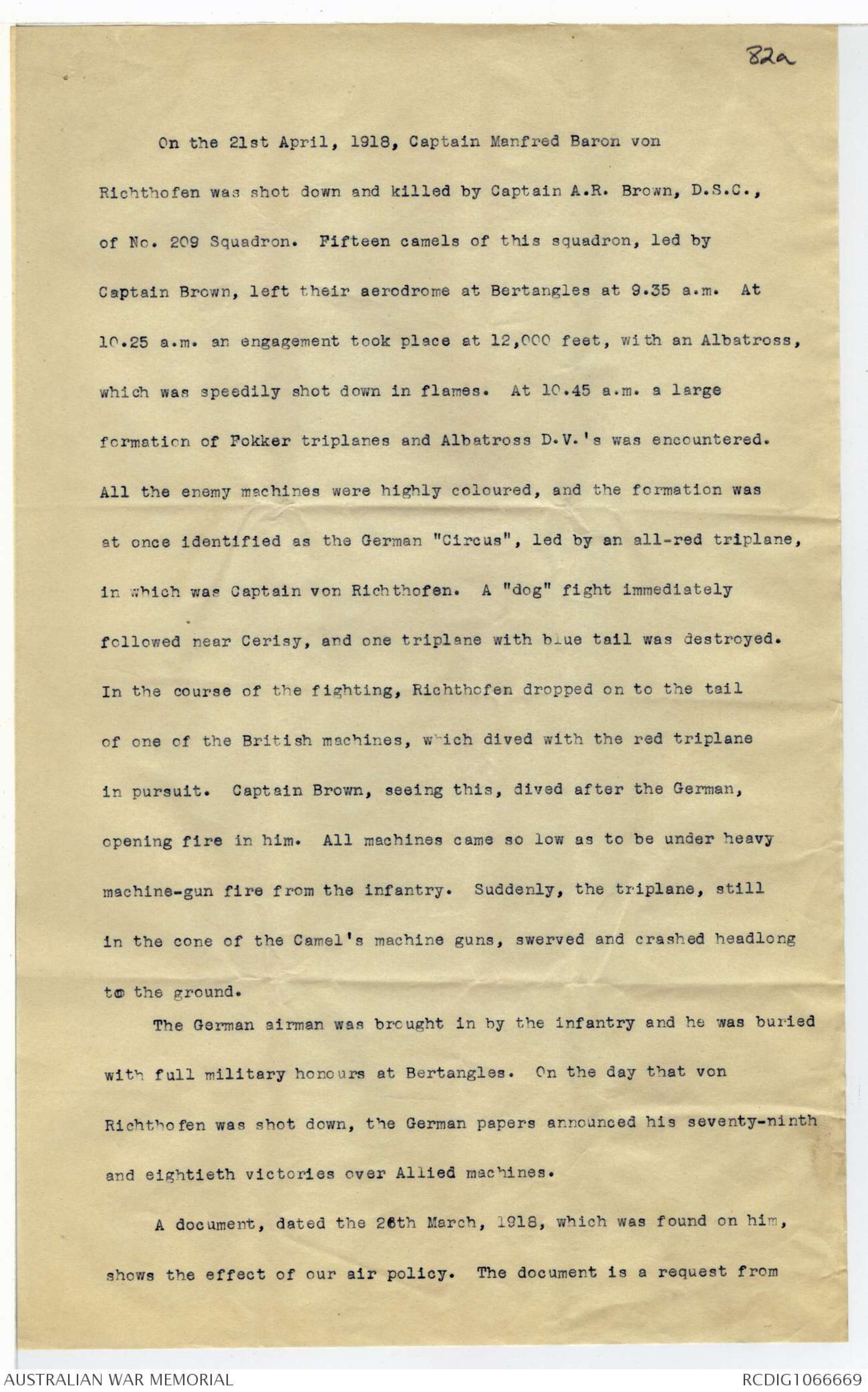
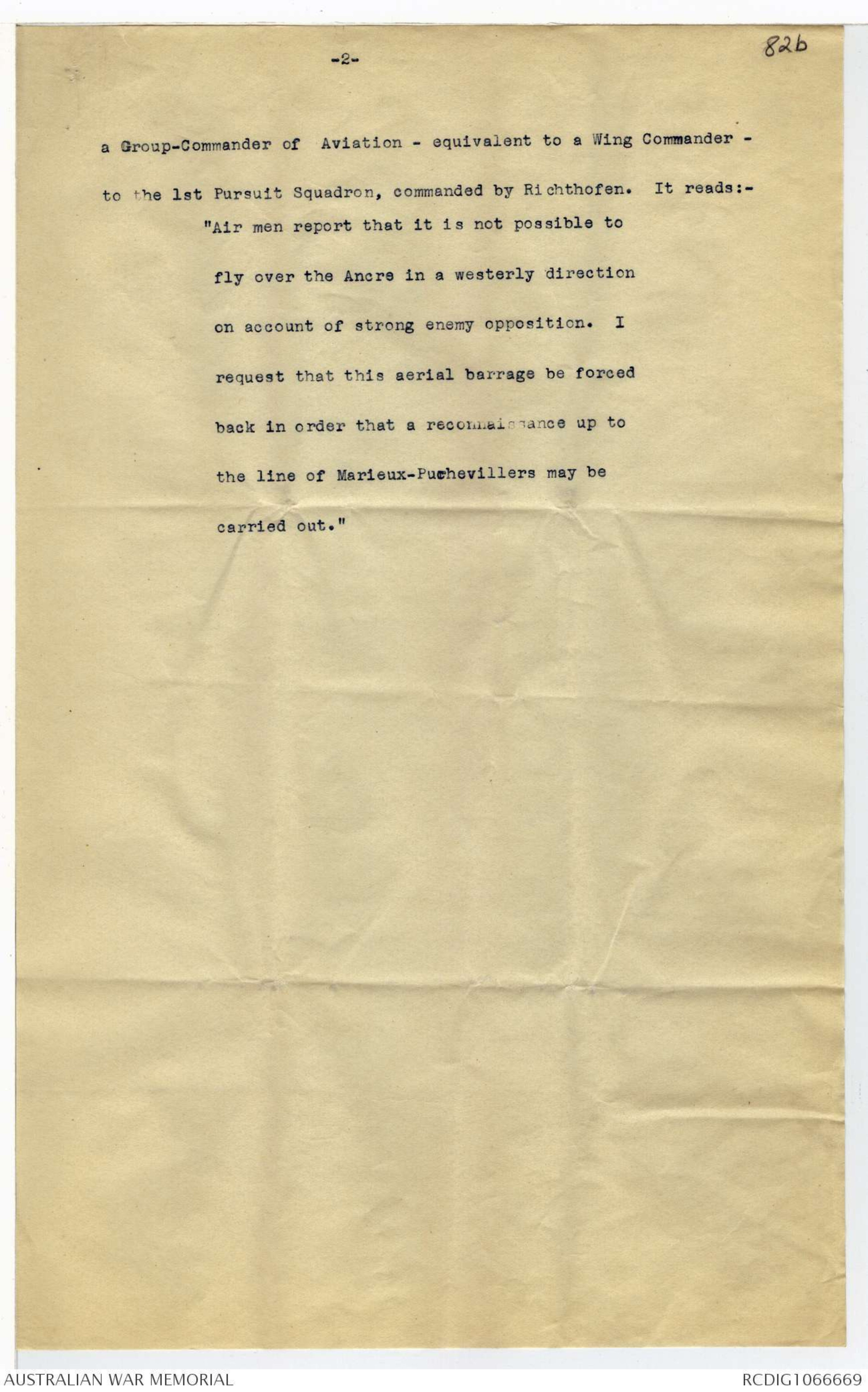
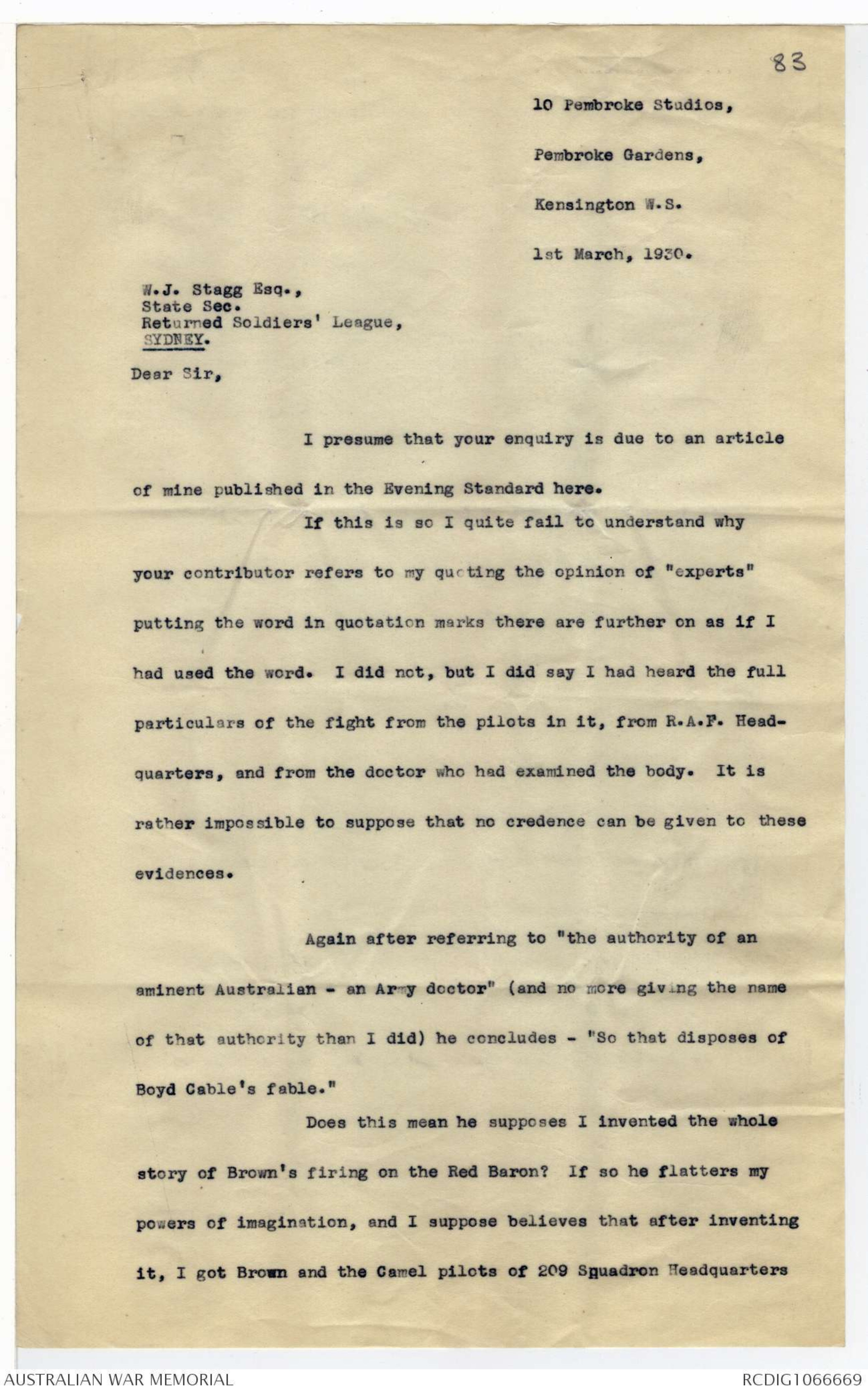
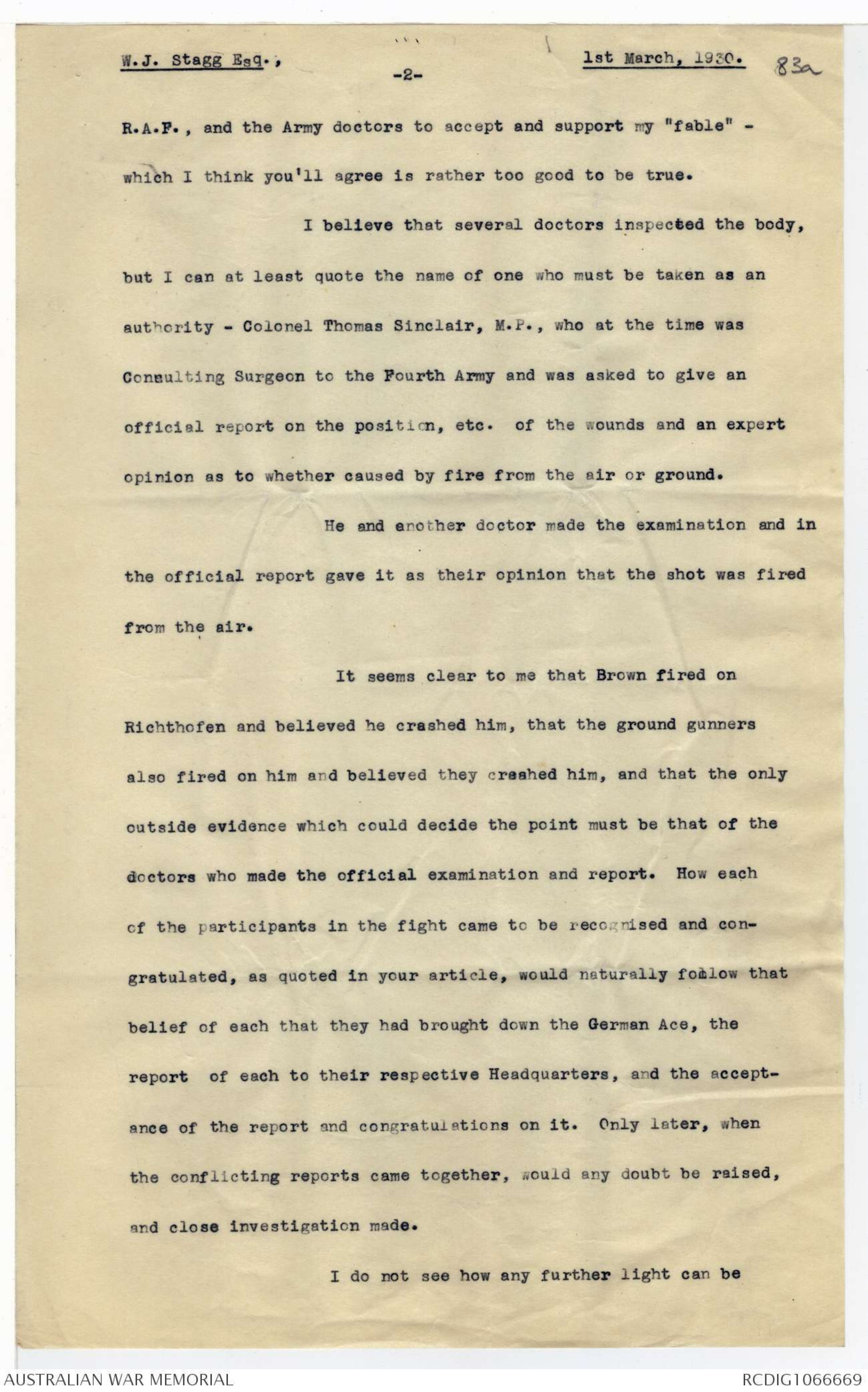
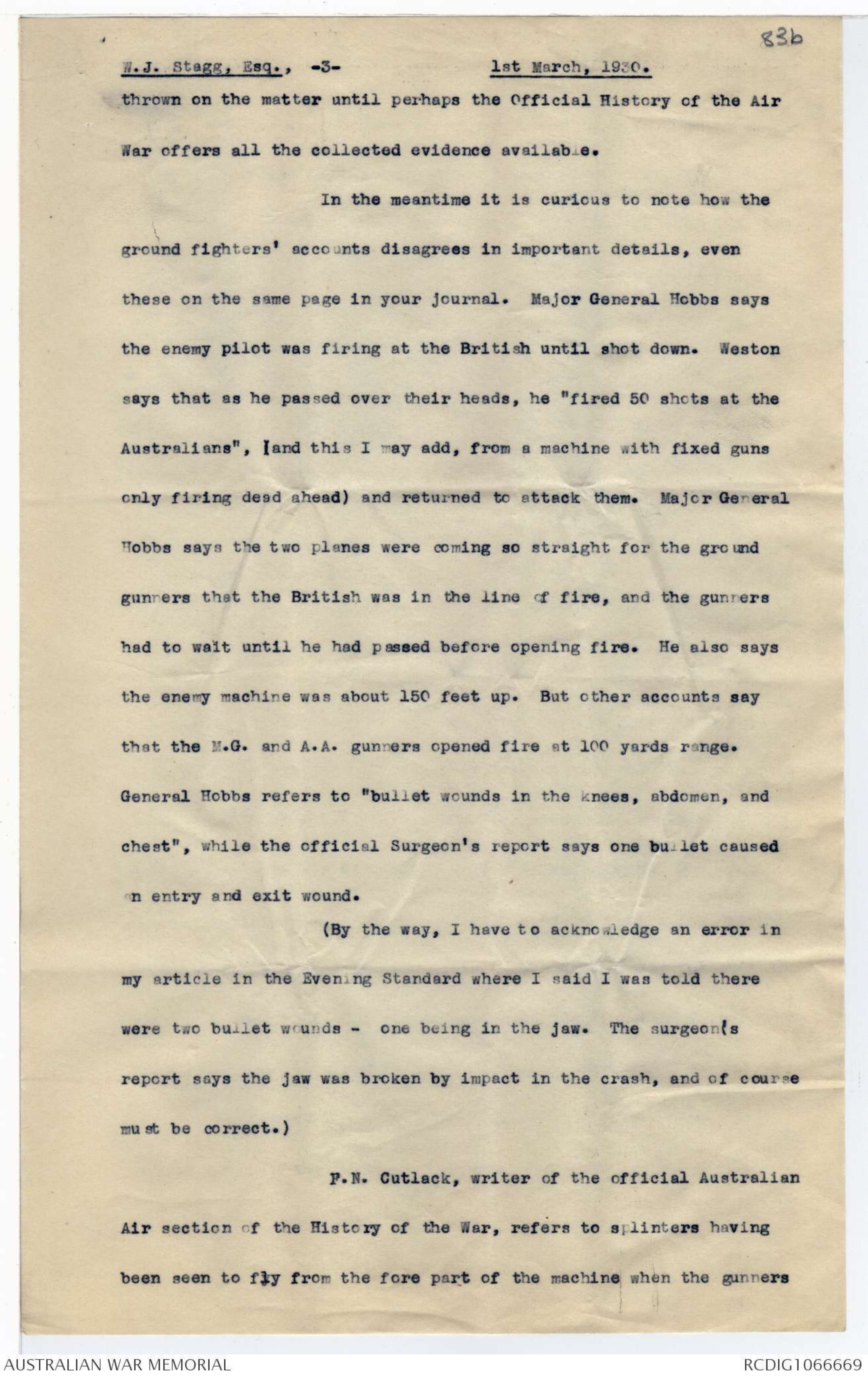
79a
Printed Article - see original document
22
The REVEILLE
April 30, 1930
Richthofen.s Death: More Controversy
Printed Article - see original document
80a
The REV
April 30, 1930
Printed Article - see original document
81
MOTTO
"The Price of Liberty is Eternal Vigilance"
TELEGRAPHIC ADDRESS
CABLEGRAMS AND TELEGRAMS
"DIGGER" SYDNEY
TELEPHONES
8 7766-8 7767
(TWO LNES)
EMPLOYMENT BUREAU
2 P.M. TO 5P.M.
M3741
STATE PRESIDENT
J. S. PURDY. DSO. M.D.
STATE SECRETARY
W. J. STAGG. A.I.I.S.
RETURNED SAILORS & SOLDIERS
IMPERIAL LEAGUE OF AUSTRALIA
NEW SOUTH WALES BRANCH:
3RD FLOOR, "WINGELLO HOUSE"
ANGEL PLACE (BEHIND CHALLIS HOUSE)
SYDNEY
ALL COMMUNICATIONS TO BE
ADDRESSED TO THE SECRETARY
IN REPLY PLEASE QUOTE
May 9, 1930
Capt. C.E,W. Bean,
Official War Historian,
Victoria Barracks,
Sydney.
Dear Sir.- -
Re Richthofen's death: Lt. Mellor's letter
was quoted in full in Reveille.
Enclosed you will find two letters (copies),
one from Boyd Cable, and the other from the Military
Attache, in Berlin.
Yours Faithfully
WJStagg
W. J. STAGG
Editor, "Reveille",
82
British Embassy,
Berlin,
2nd April, 1930.
R/1O0/30.
Dear Sir,
With reference to your enquiry dated 21st January
regarding the circumstances under which the celebrated German pilot
von Richthofen was killed, I happened to be lunching recently with a
cousin of his, Ministerial - director Baron von Richthofen, who holds
an important appointment in the German Foreign Office.
Baron Richthofen informed me that he had made exhaustive
enquiries as to how his relative met his end; although without definite
proof on the subject, he thought it most probable that his cousin was
shot down by a Canadian fighting pilot named Captain Roy-Brown, D.S.C.
There was a faint possibility that he might have been brought down by
fire from the ground, but the event took place apparently on the sector
held by the Canadian Corps.
I have also made enquiries on the subject from the German
War Archives Department at Potsdam. After thoroughly sifting all the
available evidence their opinion concurs with the above, and confirms
the official account given on pp.298 and 299 of "A Short History of
the Royal Air Force", issued by the Air Ministry in Sept. 1929, which
must therefore remain the last word on this subject. I enclose for your
information an extract from this work.
Yours faithfully,
J.W. Marshall - Cornwall.
Colonel, G.S., Military Attache.
82a
On the 21st April, 1918, Captain Manfred Baron von
Richthofen was shot down and killed by Captain A.R. Brown, D.S.C.,
of No. 209 Squadron. Fifteen camels of this squadron, led by
Captain Brown, left their aerodrome at Bertangles at 9.35 a.m. At
10.25 a.m. an engagement took place at 12,000 feet, with an Albatross,
which was speedily shot down in flames. At 10.45 a.m. a large
formation of Fokker triplanes and Albatross D.V.'s was encountered.
All the enemy machines were highly coloured, and the formation was
at once identified as the German "Circus", led by an all-red triplane,
in which was Captain von Richthofen. A "dog" fight immediately
followed near Cerisy, and one triplane with blue tail was destroyed.
In the course of the fighting, Richthofen dropped on to the tail
of one of the British machines, which dived with the red triplane
in pursuit. Captain Brown, seeing this, dived after the German,
opening fire in him. All machines came so low as to be under heavy
machine-gun fire from the infantry. Suddenly, the triplane, still
in the cone of the Camel's machine guns, swerved and crashed headlong
to the ground.
The German airman was brought in by the infantry and he was buried
with full military honours at Bertangles. On the day that von
Richthofen was shot down, the German papers announced his seventy-ninth
and eightieth victories over Allied machines.
A document, dated the 26th March, 1918, which was found on him,
shows the effect of our air policy. The document is a request from
82b
-2-
a Group-Commander of Aviation - equivalent to a Wing Commander -
to the lst Pursuit Squadron, commanded by Richthofen. It reads:-
"Air men report that it is not possible to
fly over the Ancre in a westerly direction
on account of strong enemy opposition. I
request that this aerial barrage be forced
back in order that a reconnaissance up to
the line of Marieux-Puchevillers may be
carried out."
83
10 Pembroke Studios,
Pembroke Gardens,
Kensington W.S.
1st March, 1930.
W.J. Stagg Esg.
State Sec.
Returned Soldiers' League,
SYDNEY
Dear Sir,
I presume that your enquiry is due to an article
of mine published in the Evening Standard here.
If this is so I quite fail to understand why
your contributor refers to my quoting the opinion of "experts'
putting the word in quotation marks there are further on as if I
had used the word. I did not, but I did say I had heard the full
particulars of the fight from the pilots in it, from R.A.F. Headquarters,
and from the doctor who had examined the body. It is
rather impossible to suppose that no credence can be given to these
evidences.
Again after referring to "the authority of an
aminent Australian - an Army doctor" (and no more giving the name
of that authority than I did) he concludes - "So that disposes of
Boyd Cable's fable."
Does this mean he supposes I invented the whole
story of Brown's firing on the Red Baron? If so he flatters my
powers of imagination, and I suppose believes that after inventing
it, I got Brown and the Camel pilots of 209 Squadron Headquarters
83a
-2-
W.J. Stagg Esq.,
1st March, 1930
R.A.F., and the Army doctors to accept and support my "fable” -
which I think you'll agree is rather too good to be true.
I believe that several doctors inspected the body,
but I can at least quote the name of one who must be taken as an
authority - Colonel Thomas Sinclair, M.P., who at the time was
Consulting Surgeon to the Fourth Army and was asked to give an
official report on the position, etc. of the wounds and an expert
opinion as to whether caused by fire from the air or ground.
He and enother doctor made the examination and in
the official report gave it as their opinion that the shot was fired
from the air.
It seems clear to me that Brown fired on
Richthofen and believed he crashed him, that the ground gunners
also fired on him and believed they creahed him, and that the only
outside evidence which could decide the point must be that of the
doctors who made the official examination and report. How each
of the participants in the fight came to be recognised and congratulated,
as quoted in your article, would naturally follow that
belief of each that they had brought down the German Ace, the
report of each to their respective Headquarters, and the acceptance
of the report and congratulations on it. Only later, when
the conflicting reports came together, would any doubt be raised,
and close investigation made.
I do not see how any further light can be
83b
-3-
W.J. Stagg Esq.,
1st March, 1930
thrown on the matter until perhaps the Official History of the Air
War offers all the collected evidence available.
In the meantime it is curious to note how the
ground fighters' accounts disagrees in important details, even
these on the same page in your journal. Major General Hobbs says
the enemy pilot was firing at the British until shot down. Weston
says that as he passed over their heads, he "fired 50 shots at the
Australians", [and this I may add, from a machine with fixed guns
only firing dead ahead) and returned to attack them. Major General
Hobbs says the two planes were coming so straight for the ground
gunners that the British was in the line of fire, and the gunners
had to wait until he had passed before opening fire. He also says
the enemy machine was about 150 feet up. But other accounts say
that the M.G. and A.A. gunners opened fire at 100 yards range.
General Hobbs refers to "bullet wounds in the knees, abdomen, and
chest", while the official Surgeon's report says one bullet caused
an entry and exit wound.
(By the way, I have to acknowledge an error in
my article in the Evening Standard where I said I was told there
were two bullet wounds - one being in the jaw. The surgeon(s
report says the jaw was broken by impact in the crash, and of course
must be correct.)
F.N. Cutlack, writer of the official Australian
Air section of the History of the War, refers to splinters having
been seen to fly from the fore part of the machine when the gunners
 Sam scott
Sam scottThis transcription item is now locked to you for editing. To release the lock either Save your changes or Cancel.
This lock will be automatically released after 60 minutes of inactivity.